Hérold/Lanchbery: La fille mal gardée
Introduction
'La fille mal gardée' has been around as a ballet since 1789 (known under different names), and those who have choreographed the libretto have traditionally pinched various pieces of music to suit their needs. Frederick Ashton was no different. His own version, first performed by the Royal Ballet in 1960, is presented here by the same company in a performance filmed 45 years later.
Ashton's choreography, and John Lanchbery's score have been familiar to me since I was very young (well, the famous clog-dance at least), and so I have always considered this to be the only version. Since reading up on the work, it's amazing how many there have been. You can imagine that a ballet such as Swan Lake, or The Rite of Spring would lend itself to different interpretations dance-wise, but here, it's just the basic story-line that has remained, and so the flexibility in choreography and choice of music is almost infinite.
The story is quite simple, but then many of the best stories always are.
Girl and boy are in love, but girl's widowed mother disapproves and tries everything to prevent them from meeting up. Rich man has ineffectual son and wants to marry him off. Rich man makes offer to aforesaid widow, and she agrees that her daughter should marry him.
Community goes out harvesting and generally make merry. Boy and girl try to meet up as much as possible, however ineffectual son gets in the way.
Eventually, ineffectual son is brought to widow's house for contract to be signed, and is given key to girl's room, only to discover boy and girl together. General rejoicing ensues when widow finally realises that her daughter will only be happy with boy, and so agrees to their own union.
So, not much to go on, but the basic storyline of 'common' folk, and their day to day lives has always been of interest, and was the great leveller in opera and ballet, taking the gods, nymphs, shepherds and random Classical miscellany down several pegs or three, allowing composers to interact with those people they have always wanted to impress, rather than just those who pay them.
This particular pre-French Revolution (but only just!) story would have been much more potent in those days for the reasons mentioned above. The Ashton/Lanchbery ballet (only some of Hérold's music was used, yet his name seems to have stuck in the collective ballet consciousness) is more of a pantomime, yet contains such wonderfully humanistic charm, you cannot help but take it seriously.
Audio
Absolutely no problem here. Both options (DTS and Stereo) give you clarity and depth, but it's always nice to use the spatial quality (if that's the right phrase) of more than two speakers.
Video
Again, no problems detected at all. Colours and lighting are vital to a live audience, and so should be as vital to anyone watching a recording. It would have been great to have seen the storm scene live, but turn it up (and forget you are listening to a pastiche of the Pastoral Symphony) and you may get an idea about how it would have been in the theatre. Some great effects picked up well on the disc.Extras
Disappointing for such a recent recording. I may moan about the lack of extras on the Opus Arte reissues (although secretly I understand about the costs involved), but for a full-price disc of a recent show, however good, we really need a bit more.
There is an informative short essay from David Vaughan in the accompanying booklet, but that's it apart from the usual cast gallery and illustrated synopsis.
The performance was obviously on TV (must have missed it) a while back, as in the title sequence we see 'Presented by Deborah Bull'....except of course it wasn't. Perhaps a bit of surreptitious editing is a good idea in cases like this.
And!....I would rather not have to go searching through the internet to see what the 'Fanny Essler pas de deux' is - apparently, it's something Ashton picked up from the dance archives, but nothing is mentioned in the booklet. I am therefore obviously supposed to know all about it!
Conclusion
I seem to have moaned enough.
This is a disc which should be on everyone's list. By everyone, I don't just mean those who enjoy ballet and who have probably got this down on VHS (which, if they have Deborah Bull's bits, has more than the DVD has!), but for those who probably have never bothered to watch a ballet at all. It will never be as good as watching it live, but then no recording is. What you do see here is the obvious enjoyment of the dancers, and the even more obvious connection between Carlos Acosta and Marianela Nuñez who are a joy to watch.
Nuñez was last mentioned in my reviews as the Lilac Fairy in 'Sleeping Beauty'. Here, she takes the lead role, and is absolutely astonishing. There may be more challenging roles - I am not an expert, but for sheer vivacity, charm, beauty, skill..and yes, she can act (!), you won't get much better than this....and her smile is still something that needs to be bottled.
There's the old stereotypical idea that all little girls want to be ballerinas (and to be honest, if you show this disc to some, there wil be a few more around in 20 years), but secretly, I'm sure some blokes wouldn't mind having a go either...not as a ballerina though!
Carlos Acosta is someone I've only read about in various reviews, and so seeing him now is quite a revelation. It appears that he is actually human. Admittedly a good-looking lad, and built like someone chiselled him out of something, but there's a humility about his dancing which you generally don't see. It's almost as if he's embarrassed about having to accept the applause after every solo or pas de deux, and to be honest I don't blame him, as I'm always annoyed about the tradition of breaking up the flow just to milk the adoration of your public.
William Tuckett (Widow Simone) is the perfect pantomime dame. This is in no way an insult. As a theatrical character, he is meant to be a jokey figure of an old woman, played by a man. Here, Simone is actually very loveable. She may beat her daughter, but her daughter obviously cares about her, and so do we. There are obviously not many ballets in which you are meant to laugh out loud, but here it would be expected. Comic timing is perfect (helped by Lanchbery's scoring), and even though the clog dance is perhaps a bit too slapstick for me (it may have always been like that but I seem to remember less pratfalls), Tuckett is a worthy successor to the Royal Ballet 'Simones' that went before him.
The 'ineffectual son' I mentioned earlier is called Alain (which I'm a bit annoyed about, but as long as noone reads this it's ok, and jokes won't be made).
It must be difficult to dance well. It must be more difficult to appear to dance badly if you can dance well. If the bad dancing is choreographed, does that make it easier? I'm not sure it does, but Jonathan Howells (Alain) makes it look so, and even manages to make us sympathise with him as he lurches between cartoon-idiotic and almost Dickensian grotesqueness. The fact that he appears to have the last laugh, and is the happiest of the characters in the end says a lot.
This is getting full marks (despite lack of appreciable extras) as it made me laugh, for all the right reasons. It shows that the Royal Ballet can create a class show on one night only. Sometimes, recordings such as this are made over 2, 3 or 4 nights. I know that Nuñez wasn't dancing every night, so perhaps this made it necessary for everything to be filmed at one go. It was a good night.
There is no excuse for not including extras, but there is also no excuse for not including this in your collection.
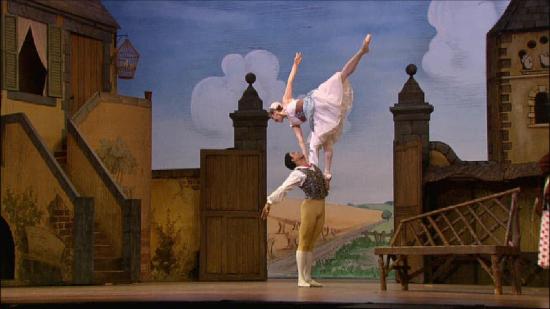
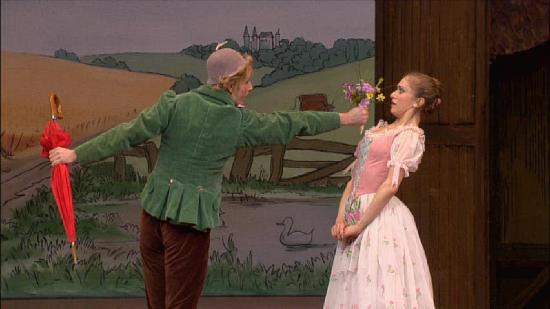
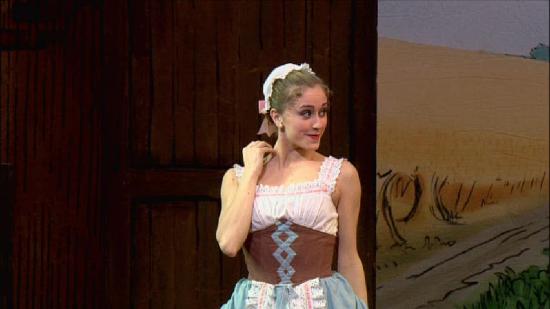
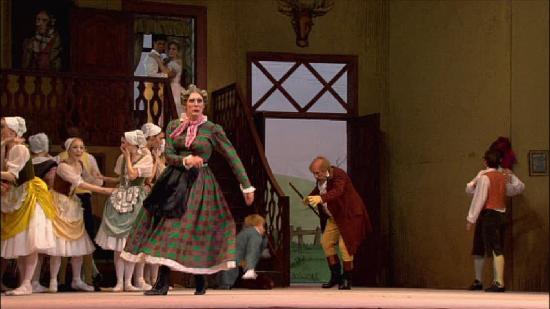
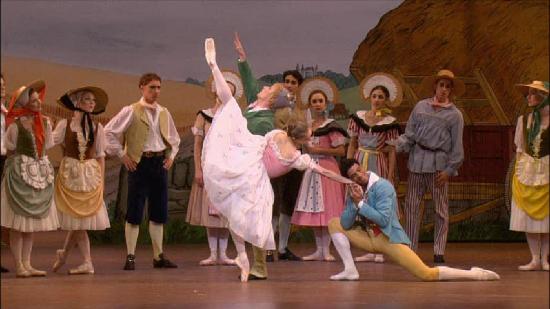
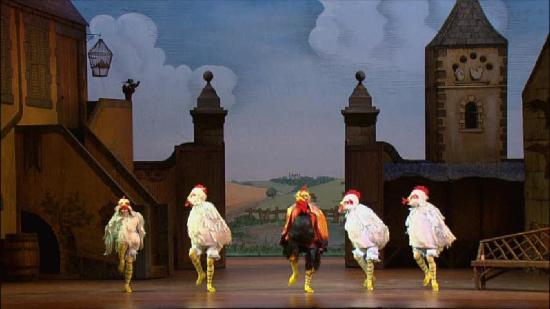
Your Opinions and Comments
Be the first to post a comment!